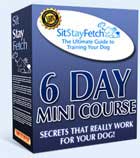Articles on Pet Matters:
A Little Bit About The Chihuahua
The Chihuahua is know by no other name and has been popular north and south of the Rio Grande for many years. It is the oldest purebred canine native to the North American continent.
The Chihuahua’s origin is filled with tales and extends back to the Toltec civilization of Mexico in the ninth century. Discovery of the earliest Chihuahuas were in the state of Chihuahua, Mexico. Ancestors of the Chihuahua could include a small hairless Chinese dog, which could account for the size reduction of the original Chihuahua. The ancient people in Mexico first developed a prairie dog or gopher, which was mute, longhaired and larger than the present-day Chihuahua.
Tales are many about the uses of this tiny dog in Toltec and later Aztec religious rites. Nearly all Chihuahua fanciers accept one fact: This is that the modern Chihuahua that was discovered in Chihuahua, Mexico, in the mid-1800s stands apart from all other canines. This tiny breed prefers its own kind to all other dogs. The Chihuahua can be sociable with other dogs, but most definitely still is more content when surrounded by other Chihuahuas. Because of this fact it probably is not a good idea to own other pets if you desire to own a Chihuahua. Your household will be better of with multiple Chihuahuas if that is your chosen breed.
The Chihuahua has no claims of ties to royalty and any hunting abilities or heritage. The Chihuahua is known primarily as a wonderful little social able human companion and that is the main purpose of the Chihuahua today and in time past. The Chihuahua is quite content to have no work assigned to it. He fits nicely even in the smallest spaces and is content to spend his days lying in the sun or being pampered by its humans. The Chihuahua makes a perfect pocket pal and can travel with you just about anywhere almost invisible to strangers. The Chihuahua is not a big eater; therefore, food expense for the Chihuahua is quite minimal. He actually requires no kind of special care beyond a warm place to sleep and his treasured humans.
Chihuahua is usually most comfortable with senior adults and other adult families. They do not fit well into homes with preschoolers, toddlers or young adolescents. Preschoolers may try to grab at the Chihuahua, toddlers are likely to step on it or fall over it and young adolescents in their busy rush of a day may injure it.
Personality
The Chihuahua will usually claim ownership of one family member with whom it bonds tightly. He is brave, loyal, affectionate and intelligent that can be highly sensitive and stubborn. He does not do well walking on a leash and being taken for long walks. It is just easier to pick up the Chihuahua and carry him on your walk rather than have him in a collar and on a leash. They are mostly house companions and adornments. Some are able to learn tricks and may even enjoy performing for guests.
Appearance
The Chihuahua has no height standard but usually stands about 5 inches tall and weighs no more than 6 pounds. Its skull is described as an apple dome shape, with or without a spot spot. Its muzzle is short and pointed. The Chihuahua is shown in smooth- and longhaired varieties. The smooth variety’s coat should be soft, glossy and close. The longhaired variety coat has a soft texture withor without waves or curls, its ears are edged with fringes, and its tail, feet, legs and neck are well feathered. Colors are any color or combination of colrs, solid, marked, or splashed.
Grooming
You will need a cushioned bristle brush and a medium-toothed comb for both the smooth coat and long haired varieties. The long haired Chihuahua is easy to maintain with weekly brushing. The short haired coat also benefits from weekly brushings. You can use a chamois cloth to bring the coat up to a shine in the short haired Chihuhua.
Connie Limon
08 Dec 2006
Connie Limon. Visit us at http://www.abouttoydogs.com and sign up for our newsletters. About Toy Dogs is a guide to the selection and care of toy dog breeds. We feature articles, dog training resources, dog books, dog supplies and a toy dog breed directory. Purchase a full page ad with up to 3 pictures, a 12 picture video and advertising in our newsletters for one year at the rate of $25 per year.
Copyright © 2006 - 2007 Tons Of Matters.com. All rights reserved.

Tons of Matters.com
If you matter, then we matter!

A Little Bit About The Pekingese
The Pekingese, also known as Peking Palasthund and Little Lion Dog of Peking, are among the favorite American pets of the twenty-first century. The Pekingese is also referred to as a sleeve dog because it is said the Chinese royalty carried the little Peke in the sleeves of their robes.
There were no real lions in China. However, the Lion of Buddha was a sacred symbol from about the first century A.D. The artist of those days portrayed Buddhist’s symbols remarkably like the emperor’s palace dogs. The Pekingese were probably the artists’ models. Until 1860 the Pekingese was kept only by the imperial family. The Imperial family designated three types:
• Lion Dogs for their manes and large forequarters;
• Sun Dogs because of their golden red coats;
• And Sleeve Dogs because they were often carried inside the rather large sleeves of the royal families.
According to historians when the British raided the Chinese Imperial Palace in 1860, they carried off five of these little dogs. One of these little dogs was presented to Queen Victoria and named “Looty.” The remaining four were given to Admiral John Hay. In John Hay’s Greenwood Castle these four Pekingese became the foundation stock for today’s Western Pekingese.
Very little is known or available of the ancestors of the Pekingese. We do know Oriental breeding was common to produce small type pug-faced dogs with flowing coats.
The Pekingese is probably better suited to adult families or those with older children who understand the need of careful handling of small dogs. The Pekingese is sociable and loves to romp with its family. He can be somewhat stubborn, never loses courage or dignity. He is even-tempered, intelligent and affectionate. The Pekingese is a loyal companion. He is best trained with gentleness, consistency and with great patience. Reward every appropriate action with a kind word and a special treat. The Pekingese is usually not known as an alarm dog. He usually resents strangers, is bold, brave and may develop into a watchdog if encouraged.
The Pekingese have not changed a lot since they were residents of the royal palace of China. They are still small and compatible little dogs. They were bred to please their royal owners. Following the fall of the Chinese palace in 1860 they were seen in Great Britain. The AKC registered the Pekingese in 1906 and the breed has grown in popularity since that time.
Pekingese do not require a lot of exercise, long walks with its owner and backyard playtime is plenty for the Peke.
Grooming
You guessed it…..the Pekingese does require quite a bit of grooming. Its coat is abundant, long, straight, flat and flowing. Most Pekingese have a black mask that extends to the ears and are seen in many different colors. Grooming should begin very early in the life of a Pekingese puppy. The fine coat tangles easy. Care must be taken to straighten or clip out mats as they form. The top coat is coarse with a thick undercoat. There is a profuse mane extending beyond its shoulders which forms a cape around the neck.
You will need a slicker or pin brush and a wide-toothed comb. Brushing regularly is essential. Pet Pekingese are more comfortable having their stomach, chest and genital area clipped very short. Show dog Pekingese, however, are not clipped in this manner.
Connie Limon
09 Dec 2006
Connie Limon. Visit us at http://www.abouttoydogs.com and sign up for our newsletters. About Toy Dogs is a guide to information about the selection and care of toy dog breeds. We feature articles, dog books, dog toys and supplies, and a toy dog breeder directory. Purchase a full page ad with up to 3 pictures, 12 picture video and advertising in our newsletters for one year at the rate of $25 per year.
Sit Stay Fetch
Put an End to the Stress and Annoyance of Your Dog Behavior Problems!
...AND Slash Your Dog Obedience Training Time in Half by Using Techniques That Give You Immediate Results!!

I designed SitStayFetch to be the easiest system to follow on the market today for learning how to train your dog and change its behavior. It is jam-packed with information, including how to solve over 25 dog behavior problems, real-life case studies, the best dog training techniques, an email consultation with the SitStayFetch team, piles of photos that will boost your learning AND step-by-step instructions... all within one instantly downloadable book...
http://netwkcyj.sitstay.hop.clickbank.net/




